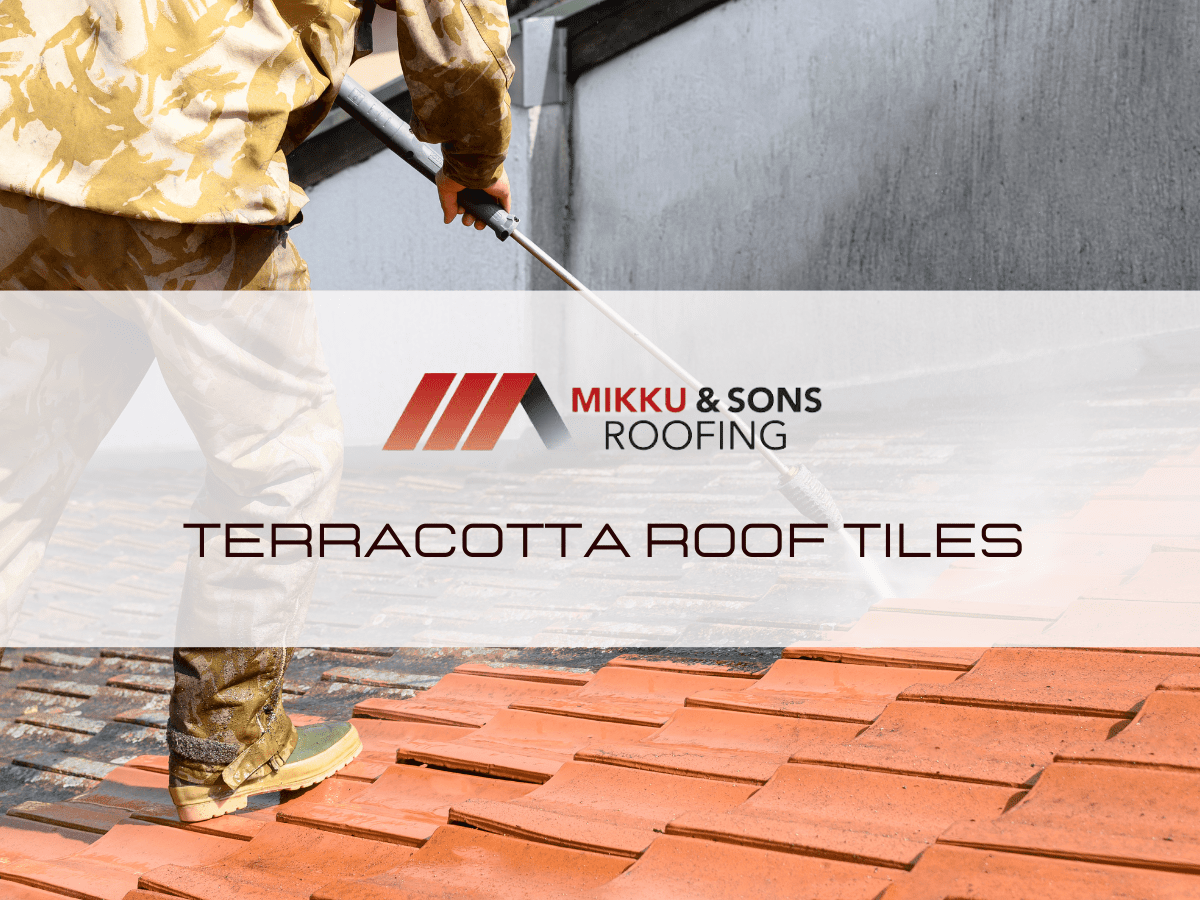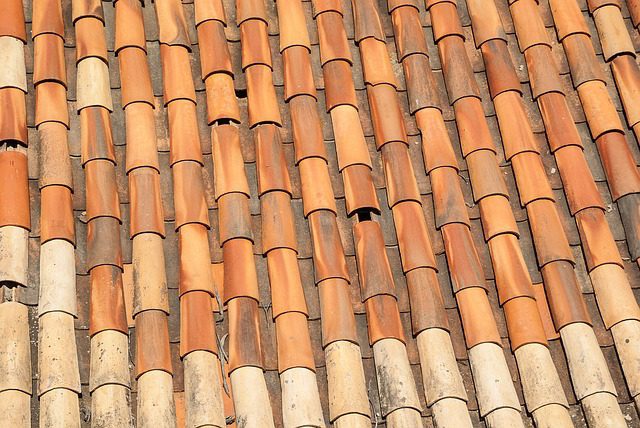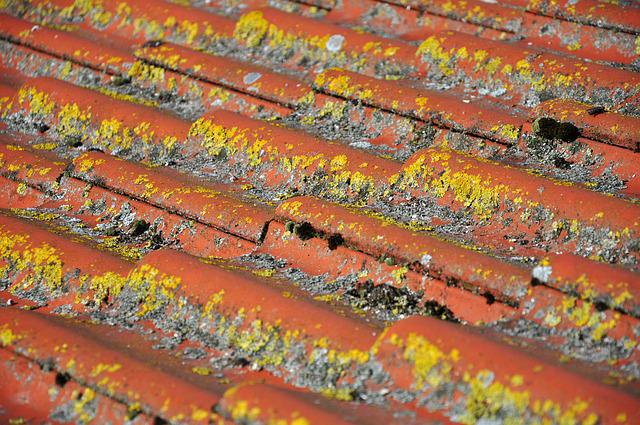

A terracotta roof is one of the most eye-catching and long-lasting solutions for a roof in the marketplace today. They offer unequaled beauty, energy-efficiency advantages, and unrivaled durability from a 100 percent natural material.
They improve a building's curb appeal and meet the design objectives of many families and businesses by offering a refined, old-world elegance to these structures. They are, however, a pricier option compared to other roof types for these qualities.
In the past, terracotta roofing tiles were manufactured from locally available clay and baked in an oven or kiln to harden.
Fired terracotta tiles were first used as a building material in China circa 10,000 years ago, and Greek pottery has used terracotta ceramics and pottery for about 9,000 years. They are one of the world's oldest known vernacular building materials.
Clay terracotta tiles come in various shapes, including circular pan-shaped and flat, rectangular ones. Rounded tiles are one of the most common types of tiling, which are arranged in an overlapping pattern to help drain water from rainfall.
The cooked clay gives terracotta roof tiles their distinctive dark orange color. When these tiles are burnt in a kiln, their color and long-term durability are preserved.

Several different companies produce a wide variety of clay tiles. They are made by extruding, molding, and pressing clay into tiles to create terracotta clay tiles.
A variety of styles and designs are available, and each one can be used in a variety of different residences. The color is baked into the clay tiles once they have dried thoroughly.
1. French style
There are two conspicuous flutes on the surface of French terracotta tiles, which add visual interest and better drainage, making them an excellent choice for tile roof options.
Accentuate your home's architectural style by installing these flutes on the roof.
2. Spanish style
Roof tiles in an interlocking pattern are known as Spanish tiles or barrel tiles. Shaped like an "S," Spanish clay tiles are unique, whereby the right side of the "S" curve rises while the left side interlocks with the tile next to it to create a geometric pattern.
They require eave closures to protect the roof from moisture and pests. This roofing style has been popular for centuries, and many homeowners still choose them now.
3. Mission Style
Mission tile roofing is an excellent option if you're looking for a distinctive look for your roof.
The design resembles those in the Spanish style, but the mission barrel tiles have a half-circle form instead of an "S" shape.
Roofers use interlocking convex and concave designs to lay these tiles. They also need eave closures to keep the roof dry and free of pests and dampness.
4. Interlocking Style
Interlocking roof tiles can be installed in a single lap because they overlap and interlock at their sides. This type of tile is called terracotta roof shingles because it looks the most like asphalt.
The ridge at the top of the interlocking concrete tiles hooks over the batten, then the weight of the tiles above holds the row below.
Terracotta is a gorgeous roofing material that may be used on any house, no matter where it is located. Many homeowners choose terracotta as their roofing material for various reasons.
They have both advantages and disadvantages, some of which are discussed in this article.
1. Energy Efficiency
The thick clay layer of terracotta roofing can improve your home's energy efficiency by lowering your home's heating and cooling costs. You can save money on service bills and minimize your carbon footprint by combining a terracotta roof with proper attic insulation.
Clay tiles have good thermal efficiency and can be used in warmer climates because the tiles' light hue reflects the sun's rays. This reduces the need for additional air conditioning and makes the house more comfortable.
The clay tile roofs help reduce heat loss or gain and enhance air circulation and natural ventilation through the tiles' layered construction. In the winter, this forms a heat transfer barrier that keeps your roof warm and cool, reducing energy expenses by up to 20%.
2. Sustainability
Terracotta roof tiles are made from naturally sourced materials that don't need any aggregate, adhesive, or other chemical materials. Terracotta tiles are also ideal for homeowners who want to collect rainwater and store it.
The roof tiles don't contain any heavy metals or other potentially dangerous substances, but to keep the rainwater collection system clear of debris, the roof tiles need regular pressure washing.
3. Durability
Clay terracotta tiles have a long lifespan and can withstand a lot of harmful substances and degradation. Terracotta tiles can last a century or more if built correctly and maintained.
They only need occasional pressure washing to remove any moss or other material built up over time. Some may be coated with a polyurethane sealant to resist organic material development and boost moisture resistance.
The tiles are a great choice for coastal areas, where salty air can deteriorate metal and asphalt shingles. They can survive hurricane-force winds because of their enormous weight.
Terracotta is well-known for its wide range of resistance to various elements. Some of them include:
Baked clay has stone-like qualities, which makes it fire-resistant. They have the highest level of fire rating -Class A.
Terracotta tiles are permeable and porous, which allows them to be frost-resistant. When the terracotta is fired, it becomes breathable, allowing water to be absorbed and released for robust development.
Clay tiles have the highest impact rating of Class 3 and Class 4, making them resistant to hail and falling debris. This makes them more resistant to abrasion, with even higher impact-resistant qualities.
Terracotta tiles are heavyweight and have a layered structure that provides significant resistance to high-speed winds of up to 150 mph.
Terracotta roof tile will not rot and resists damage from insects, and a cement filler can be added between the gaps to prevent insects like wasps from making nests between them.
1. Weight
Regarding roof tile weight per square foot, terracotta clay tiles are up there with the heaviest at 600 to 1500 pounds. Due to the weight of clay tile roofs, home and building owners need to reinforce the roof framework, especially in locations with much snow.
There is a chance that the cost of your home may go up if you don't have a sturdy roof.
2. High Cost
Although the higher end of this spectrum is more usual, clay tile roofs can cost between $10 and $25 per square foot. On average, a clay roof installation costs $7 to $12 per square foot.
On the other hand, the true cost of terracotta roofing includes maintenance fees over the roof's lifespan. Repairing terracotta roofs requires the expertise of a roofer who is familiar with the material.
It can cost between $9 and $21 a square foot, plus setup fees, to replace any of the tiles. The additional structural elements that would have to be added to the roof as part of the construction process are not included in this cost comparison utilizing a newly built home.
3. Fragile
Clay tile roofs are brittle and can break when installed, as well as from falling branches and other debris. This compromises the integrity of the roof and causes structural and roofing damage.
A clay tile roof must be regularly inspected for deterioration, and any cracked or broken tiles must be repaired or replaced immediately.
4. Underlayment problems
The underlayment of clay roof tiles can endure up to 100 years, although the tiles only have a 20-year lifespan.
Detaching and repairing the broken clay tiles and reinstalling new ones is time-consuming and expensive.
5. Climate and pitch limitations
In severely cold areas, terra cotta clay tiles may fracture or break due to rapid freezing and thawing. On steep roofs, clay tiles tend to wobble.
As a result, a minimum slope of 212:12 inches is recommended for clay tiles. The second layer of underlayment is required for roof slopes between 212:12 inches and 4:12 inches.
Tiles made of clay terracotta are also commonly used on homes with low roof slopes. Terracotta tiles may not be the ideal choice for your property if it has a steeper roof pitch or if there are frequent snow dams.
Installing terracotta roofing requires more time and effort. Expert installers typically install waterproof underlayments to provide an additional layer of security.
To avoid water damage, it is critical that each tile is installed correctly and that the next tile is overlapped. Corrosion-resistant fasteners, drip edge flashing, and precisely installed gutters are all likely components of the installation procedure.
Installing battens to help hold your tiles in place is likely on steep-slope roofs. To achieve optimal water resistance, clay roofing tile producers would almost certainly give extensive instructions on properly overlapping and sealing the tiles.
Terracotta roofs not only look great, but they also provide a tangible link to the past.
Terracotta tiles, which have been used for centuries and will continue to be used for many more, adorn many historic homes and buildings.
The correct environment, desire for a spectacular and distinctive roof design, and willingness to pay a premium price all make this a viable roofing option for many homeowners. Terracotta roofs need to be cleaned and sealed regularly if they are to last.
Sealants do not alter the clay tiles' color but increase the roof's resistance to water. You may need to apply an adhesive sealant between the tiles if any leaks are discovered.
1. Moss and lichen removal:

Terracotta roofs are a magnet for lichen and moss, and this is bad since a build-up of moss and lichen in your gutters if left unattended, can reduce the amount of precipitation that can reach your roof.
Anti-fungal spray should be used as part of the eradication process as this is the first stage towards restoring the roof to its former glory.
2. A high-pressure clean:
The next phase involves a high-pressure cleaning procedure. The method involves using water and a high-pressure nozzle to revive your roof's natural-looking color.
3. Gutter and downspout cleaning:
Gutters channel water flowing away from the roof, and they are therefore at risk of clogging or having a build-up of debris. Cleaning the gutters and downspouts ensures there are no obstructions to flowing water.
4. Valley check:
The roof valleys are delicate parts of the roof since leakages occur at these points. Check the valley flashing, and any rusted or damaged ones should be replaced.
5. Change all broken tiles:
Broken tiles put the roof at risk for leaks, which must be changed even if they are only cracked.
It is possible to paint roof tiles; however, the paint will not adhere well. As a result, the tiles must be constantly repainted to ensure proper coverage.
The paint doesn't adhere to terracotta tiles because they have been glazed before being fitted on your roof. Painting with clay is difficult because of this. Before answering this, you'll need to familiarize yourself with terracotta roof tiles and the steps in preparing them for painting.
Many individuals prefer unglazed terracotta tiles because of their natural appearance and attractiveness. Because of their porous nature, terracotta clay tiles are susceptible to damage.
Regular maintenance and cleaning will be required because no glazed coating protects them from damage.
Some people prefer terracotta roof tiles' natural, unglazed look, but plenty of others want to have their roofs coated. The glaze helps protect them from the elements, making them more durable.
Terracotta roof tiles are one of the greenest options for a roof since locally sourced materials are used.
One of the heaviest roofing materials is terracotta, one of the most popular choices. The environmental benefits of this natural roofing alternative will be preserved if the distances between the extraction, production, and construction sites are kept to a minimum.
